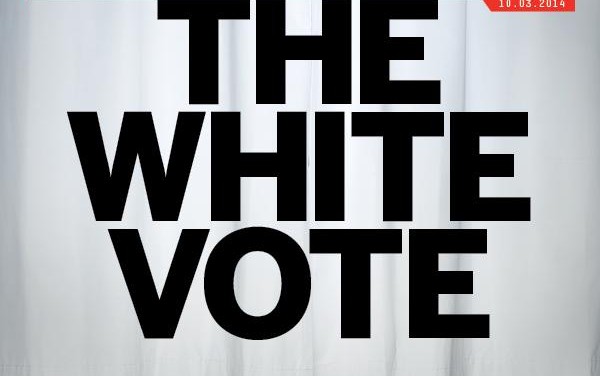
Alex Gonzalez
There is no question that veterans are a much more integral part of the GOP coalition than Latinos. But the Republican Party is struggling to gain support among minority voters, and the frail and faint nature of GOP candidates’ repudiation of Mr. Trump’s rhetoric was an important missed opportunity to reach out to Latino voters.
For those candidates who support a path to citizenship or other legal status, simply differentiating themselves from Mr. Trump without excoriating him was insufficient. And this is a real systemic problem for the future of the party because party officials did not openly criticized Trump, they did so only after Trump said Sen. John McCain was not a war hero.
Apart from Gov. Rick Perry – who deserves full credit for doing it – and Jeb Bush, many party officials in the Republican Party were slow to condemn Donald Trump’s incendiary rhetoric about Mexican immigrants. But why party officials were hesitant to condemn Trump? A long-term strategy to get a more noncollege, blue-collar and senior “whites” to vote Republican. Republican Party officials did not want reprimand an important “angry” component of the GOP base that they presume will need to take back the White House
For the other immigration hard-liners in the 2016 field, Mr. Trump has merely expressed their position in harsher and more inflammatory language that as simmered with some elements of GOP going back to 2013 failed Immigration reform and the election of 2010.
Today, Trump now leads the 2016 Republican field according to a new Washington Post/ABC News polling “and Trump gained 18 points among Republicans and Republican-leaning independents that identify as white evangelical Protestants. He gained 22 points among those earning $50,000 a year or less. He gained 23 points among those who have no college degree.”
These so-called “no college degree” Republican leaning voters have been fed misinformation about how immigrants are “taking” their jobs. And this is the economic fearmongering disseminated by Scott Walker, Ted Cruz, and Rick Santorum who blame flatlining wages on legal immigration as well as illegal immigration; both Walker and Santorum would like to see a reduction in the level of legal immigration.
As a result, this economy anxiety among blue-collar noncollege “whites” who hold negative views about immigrants has become an essential part of the long-term goal of the Republican Party to win the White House and keep – and even win more – state legislatures in purple states.
For a long time, the GOP bosses at the Republican National Committee, and Republicans in many red states, weighted their options and decided that even if they fail to court Latino voters, they can still win the White House if the manage to mobilize a strong base made of “white” voters who feel disenfranchised, and blue-collar whites that have left the Democratic Party.
In the past four years, The GOP has gained more “white blue-collar” voters that have fled the Democratic party because, in the mind of these voters, Democrats have become the party of minorities and abandoned the pressing issues of “blue-collars white” who are still struggling with unemployment, and see a widening gap between coastal elites and low-income whites in rural and middle-America.
As a result, blue-collar whites have fled to the Republican Party seeking a cultural identity they believe the Democratic Party has abandoned; and these disfranchised “white” voters base is a sizable portion of the new Republican coalition made out of “noncollege” blue-collar and seniors “whites” that virulently opposes immigration reform. And that is the reason why Trump popularity as increased in the polls to double-digits.
Thus, Republicans could not afford to offend this vociferous base that opposes an immigration reform, and now these voters cheer for Trump’s incendiary rhetoric camouflaged as “anti- establishment.” And this has been a long GOP plan to take the White House, but it is now boiling publicly within the GOP thanks to Trump.
Ronald Brownstein from the National Journal has followed this noncollege “white flight” trend in detail, and he noticed that, albeit the Hispanic Vote is increasing, noncollege “white working-class men” still vote in higher numbers than other groups:
This “white flight” started in the election of 2010’ where white voters’ rejection of Democrats in November and results may understate the extent of the white flight from the Democratic Party….and widespread skepticism about the expansive role for Washington embedded in the party’s priorities….Working-class white men used to go with the Democratic Party like hot dogs and mustard. And now? Well, not so much. The complex political allegiances of noncollege voters—and particularly noncollege white men—get less attention than the rise of the Hispanic voter. The white working-class percentage of the electorate may be on the decline, but white working-class men remain a voting bloc neither party can afford to ignore
 Brownstein also points out that Democrats have assembled a “Coalition of the Ascendant”—Hispanics, African-Americans, affluent white voters (especially women) and millennials—that has twice given Barack Obama the presidency; and immigrants, have helped cement that coalition. As a result, white noncollege voters who are not all cultural conservatives, but they often lean that way—and Obama’s progressive politics – have pushed them further away from the Democrats.
Brownstein also points out that Democrats have assembled a “Coalition of the Ascendant”—Hispanics, African-Americans, affluent white voters (especially women) and millennials—that has twice given Barack Obama the presidency; and immigrants, have helped cement that coalition. As a result, white noncollege voters who are not all cultural conservatives, but they often lean that way—and Obama’s progressive politics – have pushed them further away from the Democrats.
And this “Democrats’ White Flight Problem is what made Republican hesitant to condemn Trump rhetoric. This angry rhetoric is applauded by “conservative” populist whites who see Republicans too soft and illegal immigration and pandering to big businesses.
This is the opening Republicans want to tap into, even if they fail to appeal to Latino voters due to immigration reform opposition in the House. And this “white first” strategy to forego the Latino vote due to immigration is not a left-leaning conspiracy.
In 2013, a chorus of conservative analysts insisted that Republicans, by improving both turnout and already-gaping margins among whites, can recapture the White House in 2016 without reformulating their agenda to attract more minority voters—most prominently by passing immigration-reform legislation that includes a pathway to citizenship for those here illegally. For example Rich Lowry, editor of the National Review, and William Kristol, editor of The Weekly Standard, crystallized that argument in July of 2013 when they penned an unusual joint editorial opposing the Senate immigration bill.
The bill’s changes in legal immigration are just as ill considered. Everyone professes to agree that our system should be tilted toward high-skilled immigration, but the Gang of Eight bill unleashes a flood of additional low-skilled immigration. The last thing low-skilled native and immigrant workers already here should have to deal with is wage-depressing competition from newly arriving workers…”
“At the presidential level in 2016, it would be better if Republicans won more Hispanic voters than they have in the past—but it’s most important that the party perform better among working-class and younger voters concerned about economic opportunity and upward mobility…Passing this unworkable, ramshackle bill is counterproductive or irrelevant to that task.”
Similarly, many conservative, especially in talk-radio – argued that that “the real reason” Romney lost was not his meager performance with minorities but that he “did so poorly turning out the GOP base.” The ascent of this view inside the GOP helps explain why most House Republicans have so firmly resisted immigration reform—and why, after all of the Senate’s bipartisan negotiation, just 14 of the 45 GOP senators ultimately backed the immigration legislation, nine fewer than supported a similar comprehensive plan under Bush in 2006.
However, for Republicans, the stakes are also high. As minorities become an increasingly powerful part of the electorate, especially Democratic-leaning Hispanics, who gave 71 percent of their vote to Obama in 2012, working-class white men are losing clout. Democrats are betting that it’s a plus for them, wooing Hispanics, even if it might play poorly with working-class white men and some “fly” to the Republican party.
Conservative analysts insist that Republicans, by improving both turnout and already-gaping margins among whites, can recapture the White House in 2016 without reformulating their agenda to attract more minority voters—most prominently by passing immigration-reform legislation that includes a pathway to citizenship.
On the other side is an array of Republican strategists who view minority outreach and immigration reform as critical to restoring the party’s competitiveness—and consider it suicidal for the GOP to bet its future on the prospect that it can squeeze even larger advantages out of the diminishing pool of white voters. Karl Rove, the chief strategist for George W. Bush’s two presidential victories, has noted that relying entirely on whites would soon require Republicans to regularly match the towering advantage Reagan recorded among them when he lost only a single state in his 1984 reelection.
Romney failed to turn out about 5 million to 6.5 million white voters who should have voted, most of them “downscale, Northern, rural whites” demographically similar to voters who flocked to Ross Perot in 1992. Republicans were less likely to recapture the White House by gaining among minorities than by improving both turnout and vote-share among whites—which he suggested could reach as high as 70 percent. “It seems a bit touchy to assume that Republicans will max out at around 60 percent of the white vote.
While white men and women represented equal shares of the vote in 1984, in 2012 the women (at 38 percent) outvoted the men (at 34 percent). Combining education and gender underscores the point. Men without a college education have become the most reliably Republican component of the white electorate; women with a college degree are the most receptive to Democrats.
But veteran Republican pollster Whit Ayres is warning Republicans that high “white” turnout is not enough the win the White House. He calculates that Republicans actually need to win a higher number than George W. Bush won in 2004 among Latino voters
“Whit Ayres says the party has to do much better much faster, the Republican nominee must capture the mid-forties, or better, among Hispanic voters, of the Latino vote in 2016 to win the presidency.”
For Republicans, voter intensity in 2016 in key for a high turnout among disfranchised no college whites, even if they hold harsh negative views about immigrants and these views turn off Latino voters; party bosses do not want to risk a third party candidate like Ross Perot that will only take votes away from a Republican candidate. So it is very unlikely that Republican Party official will come out publically against these views, even after Trump leaves the presidential race.
 Alex Gonzalez is a political Analyst and Political Director for Latinos Ready To Vote. Comments: [email protected]
Alex Gonzalez is a political Analyst and Political Director for Latinos Ready To Vote. Comments: [email protected]



